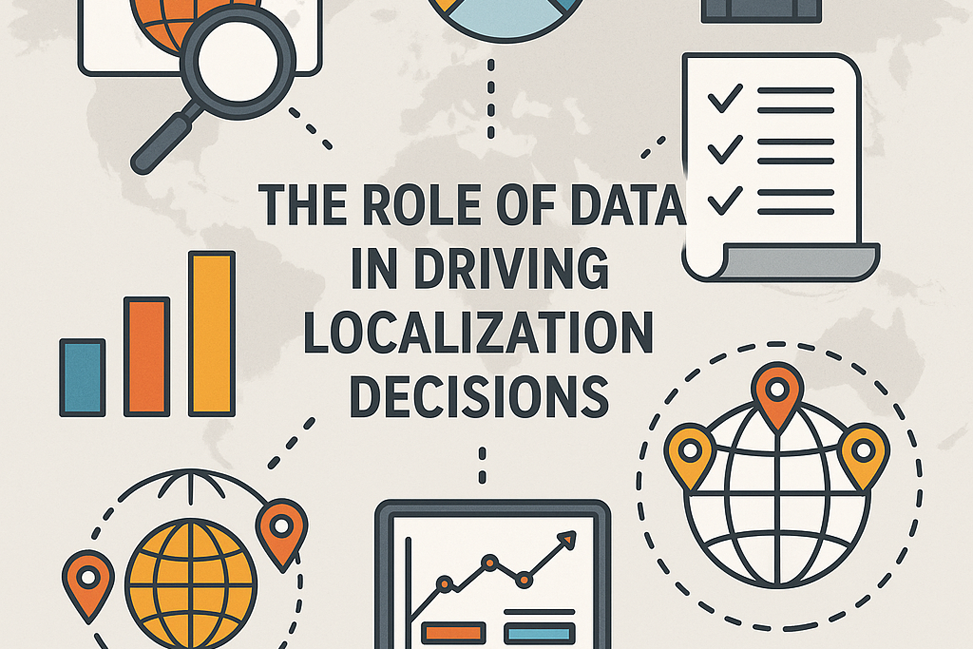In a rapidly globalizing world, companies must adapt their products, services, and content to resonate with diverse audiences across linguistic and cultural boundaries. This process—localization—is essential for delivering relevant, engaging experiences to users in different markets. However, effective localization is not achieved through guesswork or a one-size-fits-all approach. Instead, it must be informed and guided by data at every stage of the decision-making process.
This article explores the multifaceted role of data in shaping localization strategies, from identifying market opportunities to optimizing translation workflows and measuring performance.
Identifying and Prioritizing Localization Opportunities
One of the first and most critical questions companies face is where to localize. With limited resources, organizations must prioritize markets that offer the greatest potential for growth and return on investment (ROI). Data plays a crucial role in answering this question.
Market research data such as GDP, internet penetration rates, mobile usage, and e-commerce activity help identify where demand exists. Furthermore, web analytics can reveal where international visitors are already coming from, what languages they speak, and how they interact with your digital properties.
For instance, if a U.S.-based software company notices a growing number of downloads or website traffic from Brazil, it may consider Brazilian Portuguese as a priority language for localization. But beyond traffic volume, conversion rates and customer lifetime value (CLV) by region can also indicate market maturity and profitability.
Companies that rely solely on intuition or anecdotal input risk misallocating resources. In contrast, a data-driven approach enables strategic decision-making based on objective evidence.
Audience Segmentation and User Insights
Not all users within a market are the same. Localization efforts must also consider micro-level user behavior and segmentation, which data can illuminate. User personas, built from behavioral analytics, purchase histories, social media interactions, and customer feedback, help companies understand what local users truly value.
For example, in some markets, users may prioritize simplicity and mobile-first experiences, while others may respond better to in-depth product descriptions or community-driven support. Language usage also varies—formal or informal registers, regional dialects, and slang can significantly influence engagement.
A/B testing localized content is another way data helps fine-tune messaging. By comparing how users respond to different versions of text or images, businesses can refine their localization to match local preferences more closely.
Data-Driven Content Strategy
Data also informs what content to localize. Not all materials have equal value in every market. By examining performance metrics—such as page views, bounce rates, time-on-page, and engagement rates—organizations can prioritize high-impact content for translation.
In e-commerce, for example, product pages with the highest conversion rates or those related to top-selling items should be prioritized. For SaaS platforms, onboarding guides and knowledge base articles that receive heavy traffic may be the best starting point.
Additionally, SEO data is vital. Keyword research in different languages helps local teams understand what potential users are searching for and tailor localized content to improve visibility and organic reach.
Streamlining Localization Workflows with Data
Beyond strategy, data can also optimize localization operations and processes. Project management tools, translation management systems (TMS), and localization platforms generate valuable data about timelines, costs, quality, and vendor performance.
For example:
- Turnaround times help assess workflow efficiency and identify delays.
- Quality metrics, including error rates and revision frequency, highlight areas where linguists or tools may need improvement.
- Cost-per-word and cost-per-project data enable budget forecasting and cost control.
This operational data helps organizations build more scalable, predictable, and efficient localization pipelines. It also supports automation and the integration of AI-powered tools like machine translation (MT) and translation memory (TM), further reducing time-to-market.
Measuring Localization Impact
Localization is not just a task—it’s an investment. To measure ROI and effectiveness, companies must track post-localization performance metrics.
These include:
- Increases in traffic and engagement from localized regions
- Growth in user acquisition and retention
- Improvements in customer satisfaction (measured through NPS, CSAT, etc.)
- Conversion rate improvements after localization
- Support ticket reduction in localized knowledge bases
Comparative data (before vs. after localization) paints a clear picture of what’s working and what’s not. It also provides the evidence needed to justify further investment in localization or make adjustments to strategy.
Moreover, customer feedback—gathered through surveys, app reviews, and social media—offers qualitative data that complements quantitative analysis. Feedback loops allow businesses to continuously improve the quality and cultural relevance of their localized offerings.
Leveraging Predictive and Prescriptive Analytics
As organizations mature in their data capabilities, they can move beyond descriptive analytics to predictive and prescriptive analytics. This means not just understanding what has happened, but anticipating future trends and making proactive decisions.
Predictive models can help forecast which markets are likely to grow in demand, which languages will be in higher demand, or which content is likely to perform well if localized. Prescriptive analytics goes one step further by recommending specific actions based on the data, such as automating content updates or flagging cultural inconsistencies.
When paired with machine learning, this level of data-driven decision-making enables hyper-personalized localization, where user experiences are dynamically adapted based on behavior, preferences, and location.
In an age where global competition is fierce and user expectations are higher than ever, the success of localization efforts hinges on how well they are informed by data. From identifying target markets to optimizing content, managing workflows, and measuring results, data drives smarter, faster, and more impactful localization decisions.
Companies that embed data into their localization strategy gain a significant competitive advantage. They can deliver more relevant experiences, build stronger customer relationships, and expand into new markets with confidence and precision. As the role of localization continues to evolve, so too must the way we use data to drive it forward.


